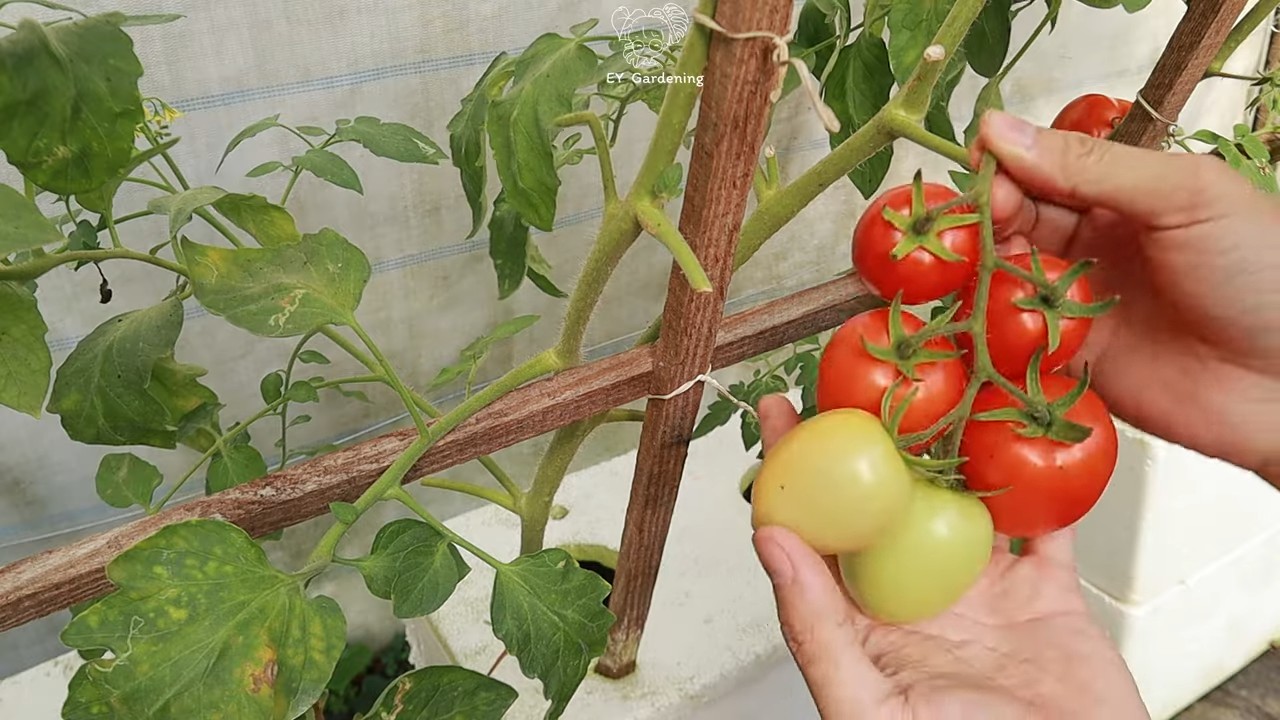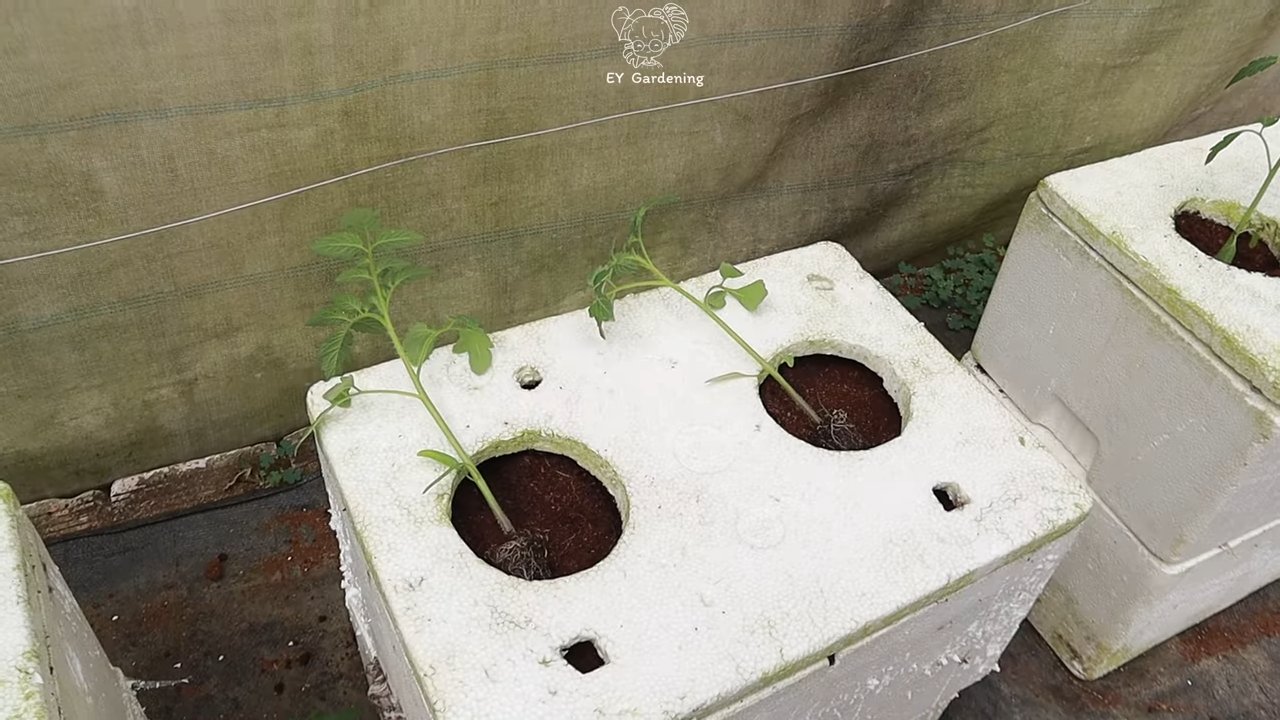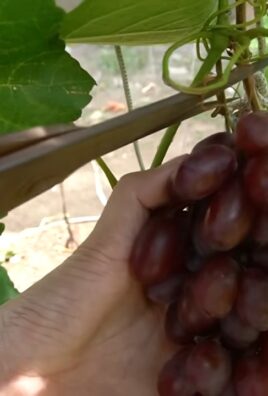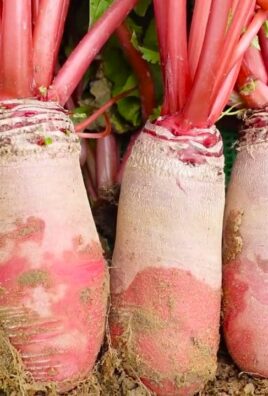Terrace tomato all year? Imagine plucking juicy, sun-ripened tomatoes from your own terrace garden, even when the snow is falling outside! Sounds like a dream, right? Well, it doesn’t have to be! For centuries, humans have cultivated tomatoes, tracing back to their origins in South America. The Aztecs and Incas were among the first to enjoy these vibrant fruits, and now, you can too, regardless of the season.
But let’s face it, extending the tomato season can feel like a daunting task. That’s where this DIY guide comes in! I’m going to share some simple yet effective tricks and hacks that will empower you to enjoy fresh, homegrown terrace tomato all year round. No more relying solely on store-bought tomatoes that lack that authentic, garden-fresh flavor.
This article is packed with practical tips, from choosing the right tomato varieties to creating a microclimate on your terrace that mimics the ideal growing conditions. Whether you’re a seasoned gardener or just starting out, these DIY projects will help you extend your tomato harvest and savor the taste of summer, no matter the time of year. So, grab your gardening gloves, and let’s get started!

Growing Tomatoes on Your Terrace All Year Round: My DIY Guide
Hey there, fellow gardening enthusiasts! Ever dreamt of biting into a juicy, sun-ripened tomato, even in the dead of winter? Well, I’m here to tell you it’s totally possible to grow tomatoes on your terrace all year round! It takes a little planning and effort, but trust me, the reward of fresh, homegrown tomatoes whenever you crave them is absolutely worth it. I’ve been doing this for a few years now, and I’m excited to share my secrets with you.
Choosing the Right Tomato Varieties
First things first, not all tomato varieties are created equal when it comes to year-round terrace gardening. You’ll want to focus on determinate or compact indeterminate varieties that are known for their shorter growing seasons and ability to thrive in containers. Here are a few of my favorites:
* ‘Patio’ Tomato: As the name suggests, this is a perfect choice for container gardening. It’s a determinate variety that produces a good yield of medium-sized tomatoes.
* ‘Roma’: Another determinate variety, ‘Roma’ tomatoes are ideal for sauces and pastes, but they’re also delicious fresh. They’re relatively easy to grow and produce a lot of fruit.
* ‘Tiny Tim’: If you’re short on space, ‘Tiny Tim’ is an excellent option. It’s a dwarf variety that produces small, cherry-sized tomatoes.
* ‘Early Girl’: This is a classic indeterminate variety that’s known for its early maturity. While it will require some pruning and support, it can produce tomatoes throughout the year with proper care.
* ‘Celebrity’: A disease-resistant, semi-determinate variety that produces large, flavorful tomatoes. It’s a good all-around choice for terrace gardening.
Setting Up Your Terrace Garden
Before you start planting, you need to create the right environment for your tomatoes. Here’s what I recommend:
* Sunlight: Tomatoes need at least 6-8 hours of direct sunlight per day. Choose a spot on your terrace that gets plenty of sun. If you don’t have enough natural sunlight, you might need to supplement with grow lights, especially during the winter months.
* Containers: Use large containers, at least 15-20 gallons in size, to give your tomato plants enough room to grow. Make sure the containers have drainage holes to prevent waterlogging. I prefer using fabric pots because they allow for better aeration and drainage.
* Soil: Use a high-quality potting mix that’s specifically designed for vegetables. Avoid using garden soil, as it can be too heavy and compact for containers. I like to amend my potting mix with compost and perlite to improve drainage and fertility.
* Support: Indeterminate tomato varieties will need support to keep them from sprawling. Use stakes, cages, or trellises to support the plants as they grow. I find that tomato cages work well for most varieties.
* Protection from the Elements: Depending on your climate, you might need to protect your tomato plants from extreme temperatures, wind, and rain. You can use row covers, cold frames, or even move the containers indoors during harsh weather.
Step-by-Step Planting and Growing Guide
Okay, let’s get down to the nitty-gritty! Here’s my step-by-step guide to growing tomatoes on your terrace all year round:
1. Start Seeds Indoors (Optional): To get a head start on the growing season, you can start your tomato seeds indoors about 6-8 weeks before the last expected frost. Sow the seeds in seed-starting trays or small pots filled with seed-starting mix. Keep the soil moist and warm (around 70-75°F) until the seeds germinate. Once the seedlings have developed a few sets of true leaves, you can transplant them into larger pots.
2. Prepare Your Containers: Fill your containers with the potting mix, leaving a few inches of space at the top. Add some slow-release fertilizer to the soil to provide your tomato plants with a steady supply of nutrients.
3. Transplant Seedlings or Direct Sow: If you started your seeds indoors, gently transplant the seedlings into the containers. If you’re direct sowing, sow the seeds about 1/4 inch deep and water them thoroughly.
4. Watering: Water your tomato plants regularly, especially during hot weather. The soil should be consistently moist, but not waterlogged. I usually water deeply every 2-3 days, or more often if the soil feels dry to the touch.
5. Fertilizing: Feed your tomato plants with a balanced liquid fertilizer every 2-3 weeks. Follow the instructions on the fertilizer label. You can also use organic fertilizers like compost tea or fish emulsion.
6. Pruning: Indeterminate tomato varieties will need to be pruned to encourage fruit production. Remove suckers (the small shoots that grow between the main stem and the branches) to improve air circulation and prevent the plant from becoming too bushy.
7. Pest and Disease Control: Keep an eye out for pests and diseases. Common tomato pests include aphids, whiteflies, and tomato hornworms. You can control these pests with insecticidal soap, neem oil, or by handpicking them off the plants. Common tomato diseases include early blight, late blight, and blossom end rot. You can prevent these diseases by providing good air circulation, avoiding overhead watering, and using disease-resistant varieties.
8. Pollination: Tomatoes are self-pollinating, but sometimes they need a little help, especially when grown indoors or in enclosed spaces. You can hand-pollinate your tomato plants by gently shaking the flowers or using a small brush to transfer pollen from one flower to another.
9. Harvesting: Harvest your tomatoes when they are fully ripe and have reached their mature color. Gently twist the tomatoes off the vine.
Extending the Growing Season
To keep your tomato plants producing throughout the year, you’ll need to take some extra steps to protect them from the cold weather. Here are a few things I do:
* Move Containers Indoors: If you live in an area with harsh winters, you can move your tomato containers indoors to a sunny location. If you don’t have enough natural sunlight, you can use grow lights to supplement.
* Use Cold Frames or Row Covers: Cold frames and row covers can help protect your tomato plants from frost and cold temperatures. These structures trap heat and create a warmer microclimate around the plants.
* Wrap Containers: Wrap your tomato containers with burlap or bubble wrap to insulate the roots from the cold.
* Mulch: Apply a thick layer of mulch around the base of your tomato plants to help retain moisture and insulate the soil.
* Water Wisely: Water your tomato plants less frequently during the winter months, as they will need less water when the weather is cooler.
Troubleshooting Common Problems
Even with the best care, you might encounter some problems while growing tomatoes on your terrace. Here are a few common issues and how to fix them:
* Blossom End Rot: This is caused by a calcium deficiency in the soil. To prevent blossom end rot, make sure your soil is well-drained and that you’re providing your tomato plants with enough calcium. You can add calcium to the soil by using bone meal or crushed eggshells.
* Leaf Curl: Leaf curl can be caused by a variety of factors, including heat stress, overwatering, and nutrient deficiencies. To fix leaf curl, make sure your tomato plants are getting enough water and nutrients, and that they’re not exposed to excessive heat.
* Yellowing Leaves: Yellowing leaves can be a sign of nutrient deficiencies, overwatering, or disease. To fix yellowing leaves, check the soil pH and nutrient levels, and make sure your tomato plants are not being overwatered.
* Lack of Fruit: A lack of fruit can be caused by poor pollination, nutrient deficiencies, or extreme temperatures. To encourage fruit production, hand-pollinate your tomato plants, provide them with a balanced fertilizer, and protect them from extreme temperatures.
Succession Planting for Continuous Harvest
To ensure a continuous harvest of tomatoes throughout the year, I recommend succession planting. This means planting new tomato plants every few weeks so that you always have plants at different stages of development. This way, you’ll have a steady supply of fresh tomatoes, even during the off-season.
Enjoying Your Homegrown Tomatoes
Finally, the best part – enjoying the fruits (or rather, vegetables!) of your labor! There’s nothing quite like the taste of a fresh, homegrown tomato. Use them in salads, sandwiches, sauces, or just eat them straight off the vine. You’ll be amazed at the difference in flavor compared to store-bought tomatoes.
Growing tomatoes on your terrace all year round is a rewarding experience. With a little planning and effort, you can enjoy fresh, homegrown tomatoes whenever you want. Happy gardening!

Conclusion
So, there you have it! Cultivating terrace tomatoes all year round might seem like a gardener’s pipe dream, but with this simple DIY trick, it’s entirely within reach. We’ve shown you how to extend your tomato season and enjoy the fresh, vibrant taste of homegrown tomatoes even when the weather outside is frightful. This isn’t just about having tomatoes; it’s about embracing a sustainable lifestyle, reducing your reliance on store-bought produce, and experiencing the unparalleled satisfaction of nurturing your own food from seed to table.
Why is this DIY method a must-try? Because it’s cost-effective, environmentally friendly, and incredibly rewarding. Forget expensive greenhouse setups or complicated hydroponic systems. This method leverages readily available materials and simple techniques to create a microclimate perfect for tomato growth, even on your terrace. Imagine the envy of your neighbors as you harvest juicy, red tomatoes in the dead of winter!
But the beauty of this DIY approach lies in its adaptability. Feel free to experiment with different tomato varieties. Cherry tomatoes and other smaller varieties tend to thrive particularly well in container settings and are often more resilient to temperature fluctuations. Consider adding companion plants like basil or marigolds to your tomato containers. These not only enhance the flavor of your tomatoes but also help deter pests naturally. You could even explore different types of grow lights to optimize light exposure during the shorter days of winter.
Don’t be afraid to tweak the method to suit your specific terrace conditions and preferences. Perhaps you want to build a more elaborate protective structure or incorporate a self-watering system. The possibilities are endless! The key is to observe your plants closely, adjust your approach as needed, and most importantly, have fun with it.
We are confident that this DIY trick will transform your terrace into a year-round tomato haven. So, gather your supplies, roll up your sleeves, and get ready to embark on a tomato-growing adventure. We encourage you to try this method and share your experiences with us. Let us know what works best for you, what challenges you encounter, and any innovative variations you come up with. Together, we can create a community of year-round tomato growers and spread the joy of fresh, homegrown produce. Share your photos and stories on our social media channels using #TerraceTomatoAllYear. We can’t wait to see your thriving tomato plants!
Frequently Asked Questions (FAQ)
What type of tomatoes are best for growing on a terrace all year round?
Smaller varieties like cherry tomatoes, grape tomatoes, and patio tomatoes are generally the best choice for terrace gardening, especially when aiming for year-round production. These varieties tend to be more compact, mature faster, and are often more resistant to temperature fluctuations and diseases. Determinate varieties, which grow to a specific size and produce all their fruit at once, are also a good option for container gardening. Indeterminate varieties, which continue to grow and produce fruit throughout the season, can also be grown, but they may require more pruning and support. Experiment with different varieties to see what thrives best in your specific terrace environment.
How do I protect my tomato plants from frost and cold weather?
Protecting your tomato plants from frost is crucial for year-round terrace tomato cultivation. Several methods can be employed:
* **Covering:** Use frost cloths, blankets, or plastic sheeting to cover your plants when frost is predicted. Make sure the covering extends to the ground to trap heat. Remove the covering during the day to allow for sunlight and ventilation.
* **Moving:** If your tomato plants are in containers, move them to a sheltered location, such as a garage, shed, or indoors, during periods of extreme cold.
* **Heating:** Use a small space heater or heat lamp to provide supplemental warmth to your plants. Be careful not to overheat the plants or create a fire hazard.
* **Mulching:** Apply a thick layer of mulch around the base of your plants to insulate the soil and protect the roots from freezing temperatures.
What kind of soil is best for terrace tomatoes?
The ideal soil for terrace tomatoes is a well-draining, nutrient-rich potting mix. Avoid using garden soil, as it can be too heavy and compacted for container gardening. Look for a potting mix that contains a blend of peat moss, perlite, and vermiculite. You can also amend your potting mix with compost or other organic matter to improve its fertility and drainage. The pH level of the soil should be slightly acidic, around 6.0 to 6.8.
How much sunlight do terrace tomatoes need?
Terrace tomatoes require at least 6-8 hours of direct sunlight per day to thrive. If your terrace doesn’t receive enough natural sunlight, you may need to supplement with grow lights. Position the grow lights about 6-12 inches above the plants and provide them with 14-16 hours of light per day. Rotate your plants regularly to ensure that all sides receive adequate light exposure.
How often should I water my terrace tomatoes?
Water your terrace tomatoes regularly, especially during hot, dry weather. The frequency of watering will depend on the size of the container, the type of soil, and the weather conditions. Check the soil moisture level regularly by sticking your finger into the soil. If the top inch of soil feels dry, it’s time to water. Water deeply, until the water drains out of the bottom of the container. Avoid overwatering, as this can lead to root rot.
What kind of fertilizer should I use for terrace tomatoes?
Terrace tomatoes benefit from regular fertilization. Use a balanced fertilizer that is specifically formulated for tomatoes. Look for a fertilizer with an NPK ratio of around 10-10-10 or 14-14-14. Fertilize your plants every 2-3 weeks during the growing season. You can also supplement with organic fertilizers, such as compost tea or fish emulsion.
How do I prevent pests and diseases on my terrace tomatoes?
Preventing pests and diseases is essential for successful terrace tomato cultivation. Here are some tips:
* **Choose disease-resistant varieties:** Select tomato varieties that are known to be resistant to common diseases, such as early blight, late blight, and verticillium wilt.
* **Provide good air circulation:** Space your plants adequately to allow for good air circulation, which helps to prevent fungal diseases.
* **Water properly:** Avoid overhead watering, as this can create a humid environment that is conducive to fungal growth. Water at the base of the plants instead.
* **Remove diseased leaves:** Regularly inspect your plants for signs of disease and remove any affected leaves immediately.
* **Use organic pest control methods:** If you encounter pests, try using organic pest control methods, such as insecticidal soap, neem oil, or diatomaceous earth.
* **Companion planting:** Plant companion plants, such as basil, marigolds, or garlic, to help deter pests and attract beneficial insects.
How do I pollinate my terrace tomatoes?
Tomatoes are self-pollinating, but they may need some assistance, especially when grown indoors or in enclosed spaces. You can hand-pollinate your tomato plants by gently shaking the flowers or using a small brush to transfer pollen from one flower to another. You can also use a fan to create air movement, which will help to distribute the pollen.
How long does it take for terrace tomatoes to mature?
The time it takes for terrace tomatoes to mature depends on the variety and the growing conditions. Generally, it takes about 60-85 days from transplanting to harvest. Cherry tomatoes and other smaller varieties tend to mature faster than larger varieties. Provide your plants with optimal growing conditions, such as plenty of sunlight, water, and fertilizer, to ensure that they mature as quickly as possible.
What do I do if my terrace tomatoes are not producing fruit?
If your terrace tomatoes are not producing fruit, there could be several reasons:
* **Lack of pollination:** Ensure that your plants are being adequately pollinated, either by hand or by natural means.
* **Insufficient sunlight:** Make sure your plants are receiving at least 6-8 hours of direct sunlight per day.
* **Nutrient deficiencies:** Fertilize your plants regularly with a balanced tomato fertilizer.
* **Extreme temperatures:** Tomatoes prefer temperatures between 60-85°F. Protect your plants from extreme heat or cold.
* **Overwatering or underwatering:** Water your plants regularly, but avoid overwatering or underwatering.
* **Pest or disease problems:** Inspect your plants for signs of pests or diseases and take appropriate action.




Leave a Comment